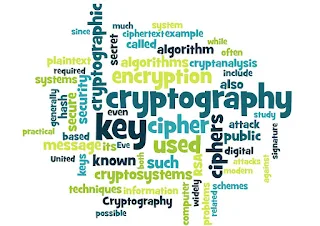 |
| Global Race to Develop Quantum-Key Distribution (QKD) Systems: How India, China, and the West are Shaping the Future of Secure Communications |
Introduction to Quantum-Key Distribution (QKD)
As the world eagerly anticipates the release of NIST’s new "post-quantum" cryptography standards, another significant effort is gaining momentum—developing cryptosystems based on quantum technology, known as Quantum-Key Distribution (QKD) systems. These systems, grounded in quantum physics, represent a nascent yet promising alternative to traditional cryptographic methods.
China's Early Lead in QKD Technology
China has emerged as an early leader in the race to develop QKD technology, thanks to substantial investments and focused research. Ciel Qi, a research analyst at Rhodium Group, highlights China's advantage, though other nations are rapidly catching up. The Chinese government’s strategic focus on QKD may have been partly driven by the U.S. concentrating its efforts on post-quantum cryptography (PQC). China's development of satellite-based QKD systems further emphasizes its commitment to securing a technological edge in this field.
The Role of Post-Quantum Cryptography (PQC)
Post-Quantum Cryptography (PQC) differs from QKD as it relies on advanced mathematical algorithms designed to withstand attacks from quantum computers. NIST is working on creating the gold-standard PQC systems that will form the backbone of future secure communications networks. However, experts like Doug Finke from Global Quantum Intelligence caution that while PQC is believed to be secure, it cannot offer the same theoretical guarantees as QKD. This potential vulnerability is why QKD continues to attract significant interest as a complementary or alternative approach.
Challenges in Implementing QKD
Despite its potential, QKD faces several practical challenges. Real-world implementations of QKD can be susceptible to side-channel and device-based attacks. Moreover, QKD requires specialized quantum-grade fiber optics networks and sensitive quantum communication technology, which are not yet widespread. These limitations make it unlikely that QKD will be used for everyday tasks, such as sending credit card information via mobile devices, in the near future.
India's Progress in Quantum Communication
India is also making strides in quantum communication, with plans to develop QKD networks spanning over 2,000 kilometers as part of its National Quantum Mission. The Indian Space Research Organization (ISRO) and private companies like QuNu Labs are leading the charge in developing QKD technology. QuNu Labs, for instance, is working on a hub-and-spoke framework for QKD called ChaQra. Despite being in the early stages, India’s efforts underscore its commitment to establishing itself as a significant player in quantum security.
U.S. and European Efforts in Quantum Security
In the U.S. and European Union, various organizations and standard-setting bodies are actively researching and promoting QKD technologies. The European Telecommunications Standards Institute (ETSI) and the IEEE Communications Society are among those spearheading initiatives to develop standards for QKD systems. Martin Ward of Toshiba’s Cambridge Research Laboratory, who chairs a QKD industry standards group at ETSI, acknowledges that while progress is being made, much work remains to be done.
The Future of Secure Communication: Hybrid QKD-PQC Systems
Looking ahead, many experts predict that PQC will become the default standard for most secure communications in a world dominated by quantum computing. However, they also acknowledge that PQC alone may not be foolproof against future quantum algorithms. This is where QKD could play a crucial role, offering a hybrid solution that combines the strengths of both QKD and PQC to create a quantum-safe network. Satyam Priyadarshy from Global Quantum Intelligence emphasizes that while current efforts to develop hybrid QKD-PQC systems are limited, this approach holds great promise for the future.
QKD’s Potential Beyond Secure Communications
Beyond its application in secure communications, QKD technology could lay the groundwork for a broader quantum network. Doug Finke notes that QKD is just one of many use cases for quantum networks, which could also include distributed quantum computing, quantum data centers, and quantum sensor networks. The research being conducted today on QKD could therefore have far-reaching implications for the development of quantum technology in various fields.









0 Comments